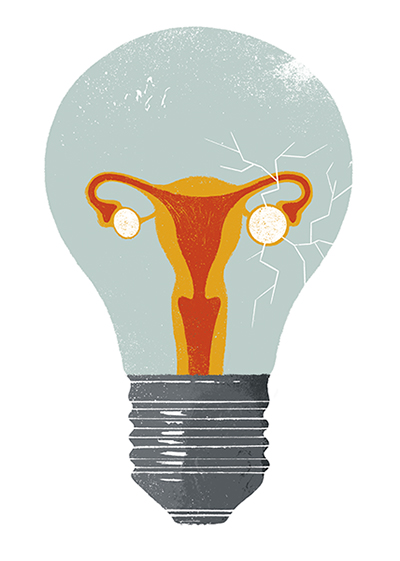Discoveries
Ovarian Cancer Culprits
Jan 20, 2020 Cedars-Sinai Staff

Adria Fruitos
Ovarian cancer has a survival rate of more than 90%—but only if caught early. It remains challenging to detect due to its vague symptoms and the lack of noninvasive screening options. Most cases are diagnosed only after the cancer has grown or spread, when the chances of survival drop precipitously.
Now, a multisite study led by Cedars-Sinai investigators Simon Gayther, PhD, and Kate Lawrenson, PhD, has identified 34 genes related to increased risk of the disease. Their findings may not only help warn women in jeopardy of ovarian cancer but also pave the way for therapies targeting the guilty genes.
The team’s work builds on previous research by the Ovarian Cancer Association Consortium comparing the genetic profiles of nearly 25,000 ovarian cancer patients to 45,000 healthy women. They found more than 30 regions in the genome associated with the disease.
To pinpoint exact genetic culprits in these regions, the study elucidated the significance of risk factors and DNA and abnormal expression of genes in ovarian and other tissues. This process was complicated by the fact that thousands of possible gene targets exist that can be affected by numerous mechanisms. “Putting the pieces together is a huge computational and statistical effort,” notes Gayther, co-director of the Applied Genomics, Computation and Translational Core and the Barth Family Chair in Cancer Genetics in honor of Beth Y. Karlan, MD.
“This study also shows how critical it is to study specific cells from which ovarian cancers arise,” says Lawrenson, assistant professor of Obstetrics and Gynecology.
Researchers hope the findings will eventually help identify ways to prevent ovarian cancer from progressing to late, lethal stages.


